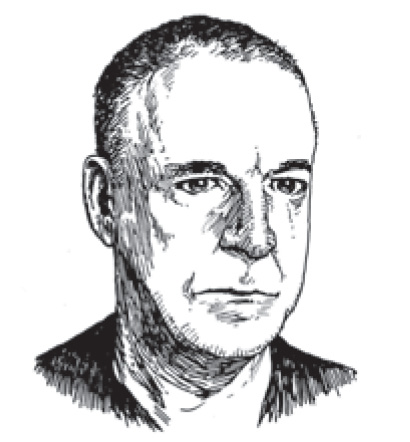Before public performances, Matt Mullican is relaxed by a hypnotist, placed into a deep trance, and asked, “What would you like to do?” When he steps onto the stage—“a white void,” as he describes it—he is no longer Matt Mullican, he is “that person,” a dissociated abstraction of the self. Performances are often similar to one another and usually include crying, drawing, cursing, shaking, vigorous rubbing, squirming on the floor, compulsive speaking, and lots of self-derision. The point, for Mullican, is to get far enough away from Matt Mullican that he begins to understand the phenomenon of himself.
Though this sort of preoccupation is usually associated with psychologists and philosophers, Mullican is squarely an artist, disinterested in academic pursuits and analytical theory. In addition to his Under Hypnosis performances, he blows glass, paints signage, designs computer software, and draws stick figures—a wide scope of media and methods Mullican connects through his exploration into the “projection of identity.” His work gained attention in the ’70s, after he graduated from CalArts and began constructing his own cosmology and conducting performative experiments on a cadaver—yelling in its ear, sticking his hand in its mouth, etc. He is often associated with a group of artists called “the Pictures Generation,” and is, above all, a postmodernist with a persistent interest in the basic human response to symbols and meaning.
In 2011, after seeing Mullican lecture on a virtual urban environment of his own construction, I requested an interview through his New York gallery, Tracy Williams, Ltd. Several months later, when he made a trip from his home in Germany to Manhattan, we spoke in the Lower East Side studio he still keeps, among a roomful of his abstract cartography.
—Ross Simonini
I.THE PASSENGER
THE BELIEVER: When was the last time you were in a trance state?
MATT MULLICAN: [Closes eyes] Don’t mind if I have my eyes closed. It’s just easier. I do that if I have to concentrate.
BLVR: OK by me.
MM: I was in Newcastle. They had an MRI machine, and they read my brain in a waking state and in a trance state, to see how it changed. So I had a hypnotist, a very good one, and she put me into a real deep trance, and I was led into the MRI machine. It’s pretty druggy. A lot of times when you’re in a trance, there’s very few physical cues that you are in a trance. Your subconscious acts on it, but you don’t realize you’re acting on it. So as far as you’re concerned, you’re wide awake—you’re normal. But this time, I was aware of the trance. She touched me. This was the first time...
You have reached your article limit
Sign up for a digital subscription and continue reading all new issues, plus our entire archives, for just $1.50/month.
Already a subscriber? Sign in





